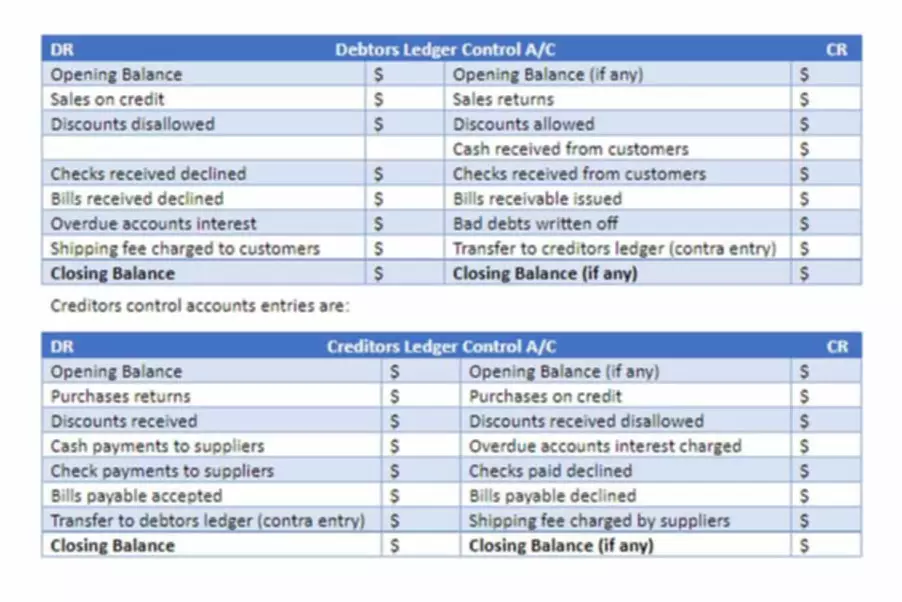Content

Even better, you can take these examples directly and use them as templates, particularly if one fits your unique needs. It might seem a bit daunting if it’s your first time, but it’s pretty straightforward when you see the steps involved. At the end of the year, review all of your accounts and see if there’s an opportunity for consolidation. Tim is a Certified QuickBooks Time Pro, QuickBooks ProAdvisor, and CPA with 25 years of experience. If you want to take your company and yourself to the next level, thenclick here to learn more about the premier financial leadership development platform. … map of a business that allows you to easily navigate through its various financial parts.
Hydroxyl-Terminated Polybutadiene (HTPB) Market To Surge USD … – Digital Journal
Hydroxyl-Terminated Polybutadiene (HTPB) Market To Surge USD ….
Posted: Wed, 28 Dec 2022 16:40:09 GMT [source]
They basically measure how valuable the company is to its owner or shareholders. There are many different ways to structure a chart of accounts, but the important thing to remember is that simplicity is key. The more accounts are added to the chart and the more complex the numbering system is, the more difficult it will be to keep track of them and actually use the accounting system. Each company may use its own CoA numbering system and may assign a number for identification purposes. A block of numbers may be assigned to one of those five categories and then be further divided into sub-categories. Gaps may be left between sub-category listings to allow for the addition of new accounts.
What is the Chart of Accounts (COA)?
Normally each account number consists of two or more digits that tell something about the relevancy of account. For example, a number starting with “1” might tell us that the account is an asset account and a number starting with “2” might tell us that the account is a liability account. Normally, appropriate gaps are provided between numbers (i.e., some numbers are left unassigned) which makes it easy to add more accounts chart of accounts in future without disturbing other accounts that already exist in the chart. You have been credited with $20 cash for these products, which means you also have $20 in the income account. This makes it easier to find particular accounts across hundreds and thousands of them. It provides a bird’s eye view of what is happening within certain business functions or divisions based on account-specific information.

In this respect, there is an advantage in organizing the chart of accounts with a higher initial level of detail. Liability accounts usually have the word “payable” in their name—accounts payable, wages payable, invoices payable. “Unearned revenues” are another kind of liability account—usually cash payments that your company has received before services are delivered. The chart of accounts lists the accounts that are available for recording transactions.
What are best practices for maintaining an accurate chart of accounts?
Exclude nonoperating income, such as interest, in your revenue accounts. The owner’s equity accounts to include vary based on the entity type of the business. Owner’s equity is the owner’s rights to the assets of the business or what’s left over after subtracting the liabilities https://www.bookstime.com/ from the assets. It includes money invested by the owner of the business plus the profits of the business since its inception. If you subtract the money taken out of the business by the owner and money owed to others, you’ll be left with the owner’s equity amount.
FREE INVESTMENT BANKING COURSELearn the foundation of Investment banking, financial modeling, valuations and more. It, therefore, makes it easy for the user to locate a particular account with the help of its account number. Business EntityA business entity is one that conducts business in accordance with the laws of the country. It can be a private company, a public company, a limited or unlimited partnership, a statutory corporation, a holding company, a subsidiary company, and so on. Visual Basic for Applications is part of Microsoft’s legacy software, Visual Basic, built to help write programs for the Windows operating system.
Chart Of Accounts For The Small and Medium Business
You should consult your own tax, legal, and accounting advisors before engaging in any transaction. BILL assumes no responsibility for any inaccuracies or inconsistencies in the content. Certain links in this site connect to other websites maintained by third parties over whom BILL has no control. BILL makes no representations as to the accuracy or any other aspect of information contained in other websites. Depending on the size of your company, the chart of accounts may have only a few account subcategories or hundreds. Each chart of accounts consists of main categories and subcategories (detailed categories that break down where Cash is going, whether it’s into Chase Savings or Chase Checking).
- We recommend beginning this process with your balance sheet accounts and then adding your income statement and other necessary accounts.
- From there, you can get even more detailed, further categorizing items by their business function, company divisions, product and service lines, and more.
- Its solution is delivered via download and enables users to manage cash flow and bill management and reduce data errors with automatic download of bank and credit card transactions.
- And even within the manufacturing line of business, a manufacturer in the aerospace sector will have a much different looking chart of accounts than one that produces computer hardware or even clothing apparel.
- A big change will make it difficult to compare accounting record between these years.
- The asset ledger is the portion of a company’s accounting records that detail the journal entries relating only to the asset section of the balance sheet.
Each of these is broken down into sub-categories to further articulate more granular characteristics. Sage Intacct is designed to help users focus on high-value analysis, financial insights, and cash flow management. It offers real-time business visibility via easy to create and use dashboards and reports and delivers efficient paperless workflow to accelerate routine accounting and reporting tasks. These “buckets” correspond to different reporting statements, which are generally split to include the balance sheets, income statements, and any work in progress reports.
First, you need to determine the numbering system since it helps identify and link accounts. The first digit showcases the account type or broad category—assets, liabilities, equity, revenue, or expenses.
- Large corporations often have ledgers with thousands of accounts spanning across multiple subsidiaries.
- Now, according to the standard definition of a COA, it should focus on the many different accounts tying into your company’s general ledger.
- A simple way to organize the expense accounts is to create an account for each expense listed on IRS Tax Form Schedule Cand adding other accounts that are specific to the nature of the business.
- Not always employed, this designation is used to control the order of accounts as they appear in the financial statements and can be beneficial in making them generally simpler to decipher and more actionable.
- AccountEdge Pro offers the option to upload your own chart of accounts.
The best way to think of a chart of accounts is as a digital filing cabinet. It takes a bit of work to set up your chart of accounts right, but it’s worth it. Instead, consider adding multiple items under both sales and costs of goods sold, separating by product type, class, or in the case of COGS, each type of cost. The revenue section of a chart of accounts is a place that is often lacking for helpful insights. Over time, that can lead to a chart of accounts that’s bloated and overly complicated. Edit your own chart of accounts with the accounts and structure that fits best for you.

